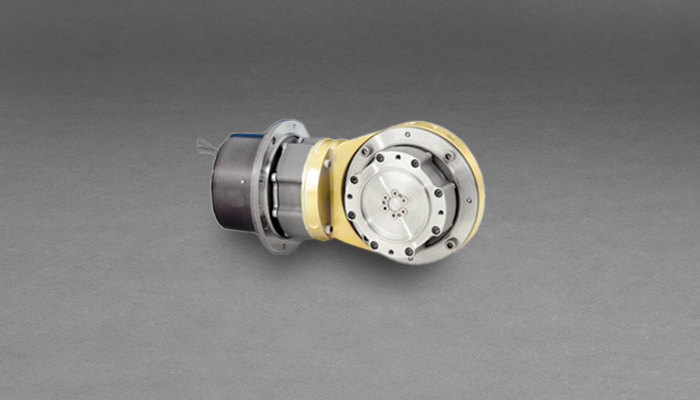Type 11 Biaxial Gimbal
Jump To:
Specifications
Resources
Related Markets
Related Products
Specifications
| Characteristic |
Units | Basis | Data |
Output Step Angle* |
Degrees | Standard | .0375 |
| Steps/Revolution* | - | Standard | 9600 |
| Harmonic Drive Ratio* | - | Standard | 100:1 |
| Output Step Rate* | Step/Sec (Deg/Sec) | Maximum | 250 (9.375) |
| Power* | Watts | Nominal | 5 |
| Output Torque* | lb-in | Typical | 70 |
| N-m | Typical | 8 | |
| Holding Torque Powered* | lb-in | Typical | 70 |
| N-m | Typical | 8 | |
| Unpowered* | lb-in | Typical | 20 |
| N-m | Typical | 2.26 | |
| Torsional Stiffness in the AZ-EL Plane | lb-in/rad | Typical | 30,000 |
| N-m/rad | Typical | 3,390 | |
| Perpendicular to Plane | lb-in/rad | Typical | 15,000 |
| N-m/rad | Typical | 1,695 | |
| Output Flange Load Capability Axial | lb | Maximum | 350 |
| N | Maximum | 1,556 | |
| Transverse | lb | Maximum | 400 |
| N | Maximum | 1,779 | |
| Moment | lb-ft | Maximum | 540 |
| N-m | Maximum | 61 | |
| Total Assembly Weight | lb | Typical | 2.9 |
| kg | Typical | 1.32 |
*Total Assembly Weight
Please contact Moog application engineers to discuss optional actuator performance requirements.
Resources
Datasheets, Brochures and Catalogs
Infographics
Related Markets
Space
Moog has designed and manufactured components and systems for satellites and launch vehicles for more than 60 years.
Spacecraft Technologies
Moog is a proven leader in components, subsystems, and systems for spacecraft of all sizes, from smallsats to GEO spacecraft. Moog has been successfully providing spacecraft controls, inspace propulsion, and major subsystems for science, military, and commercial operations for more than 60 years.

